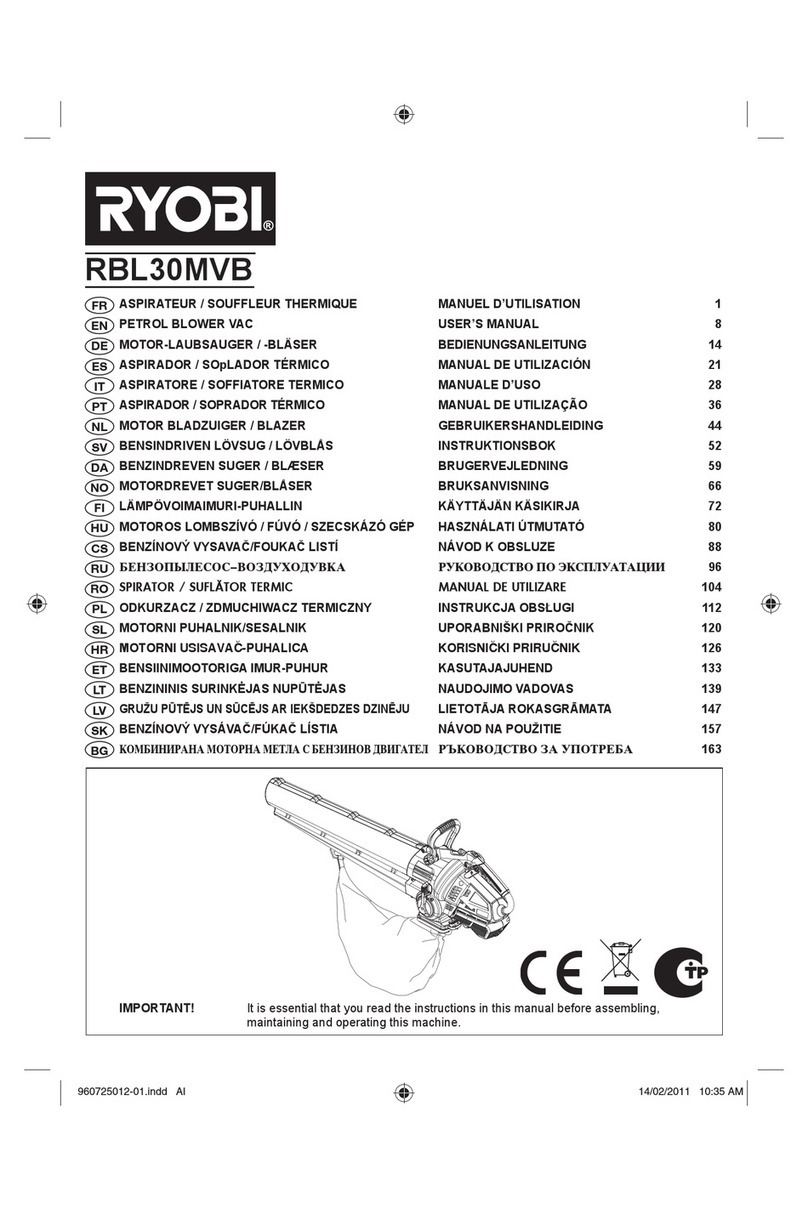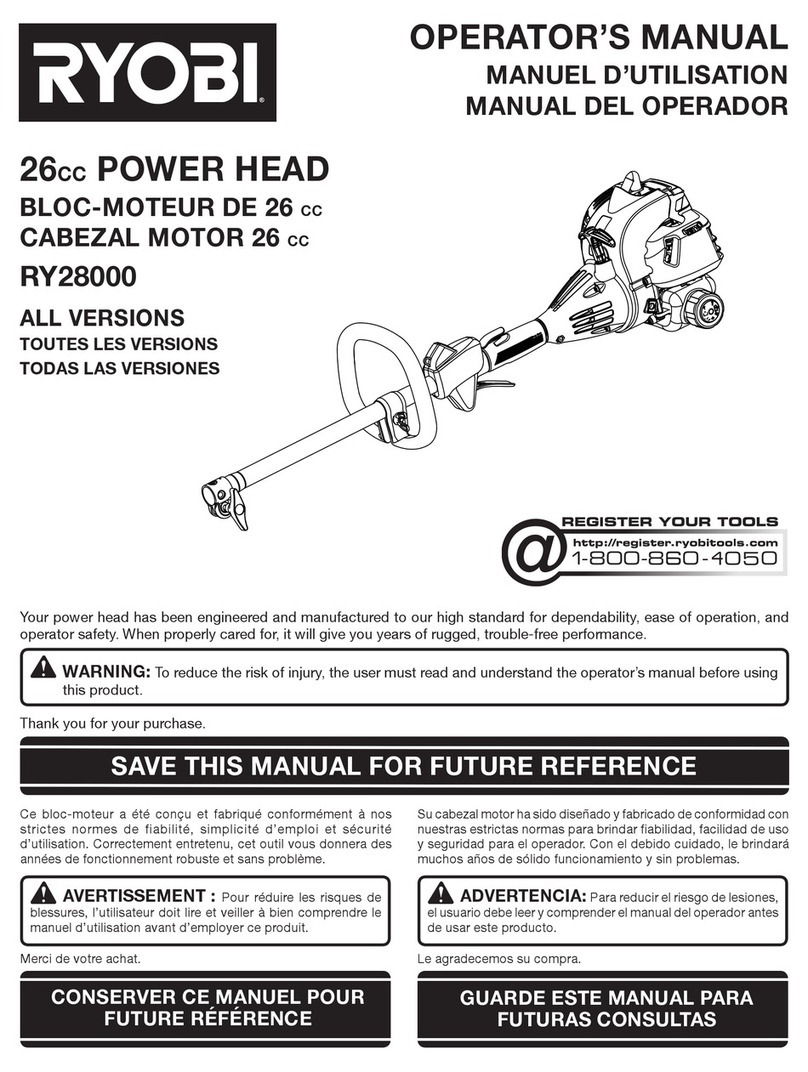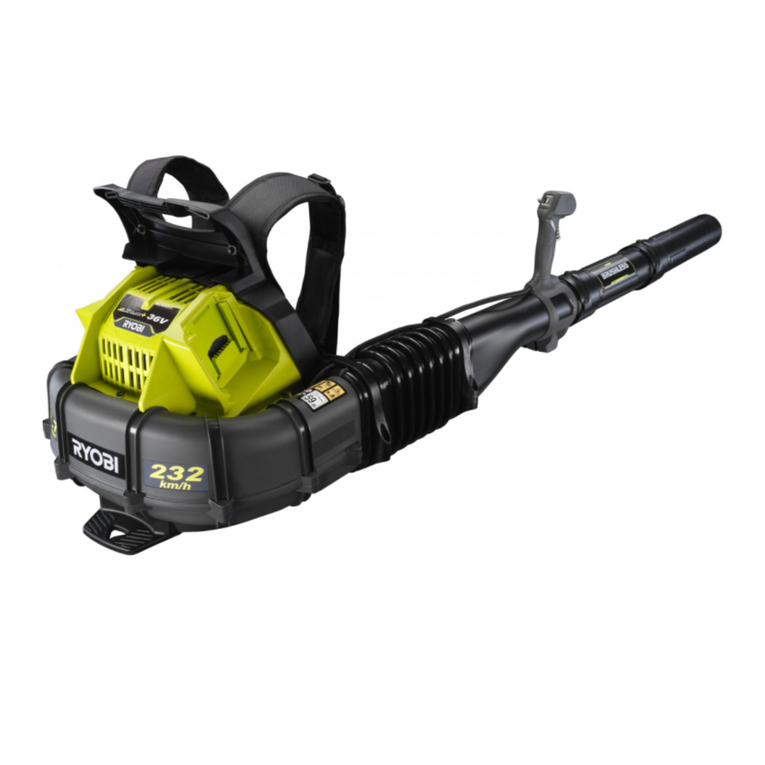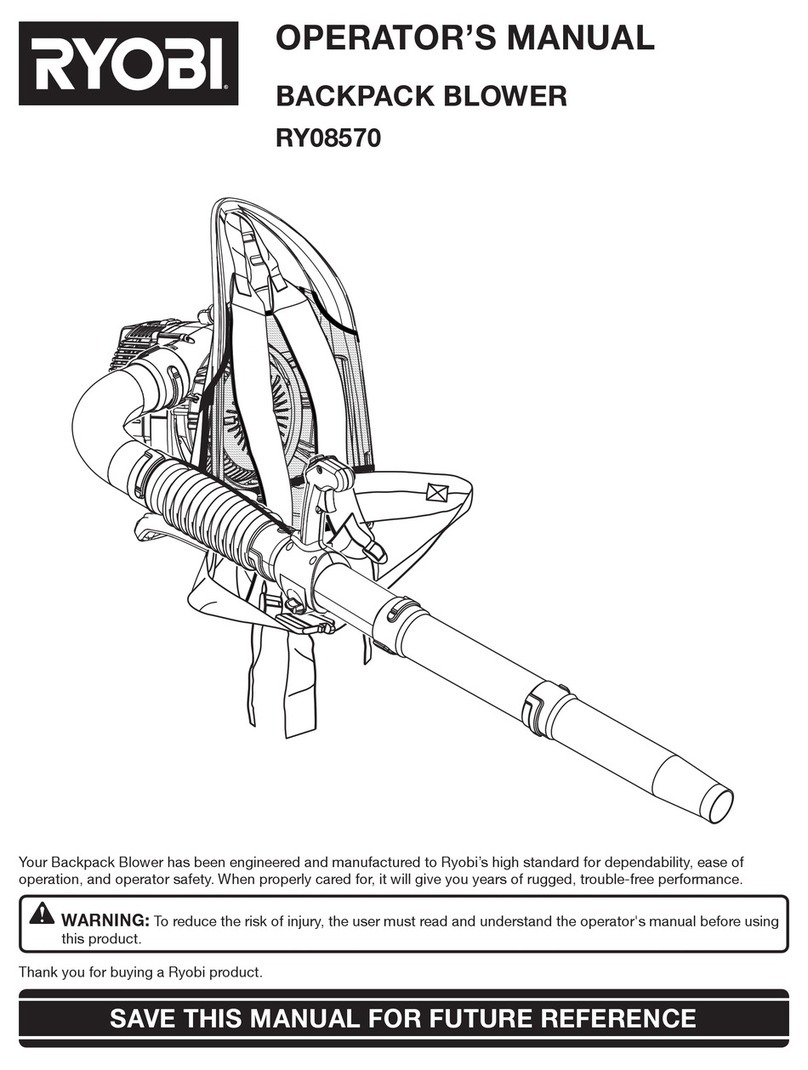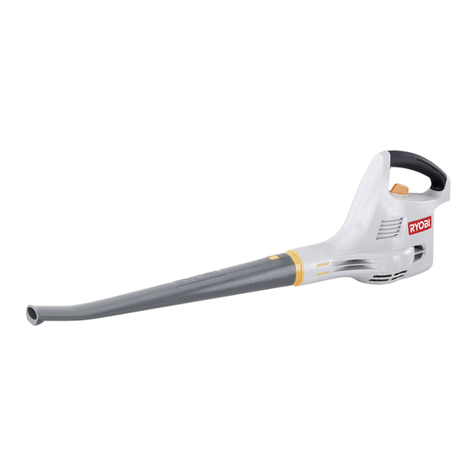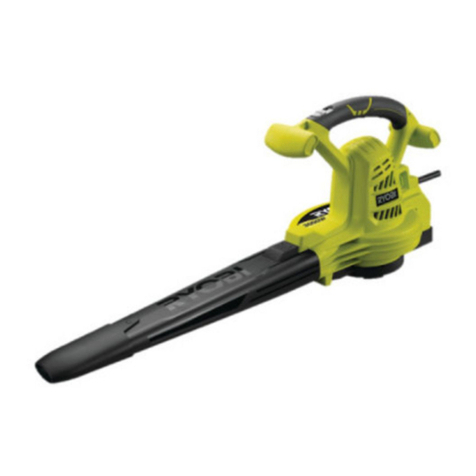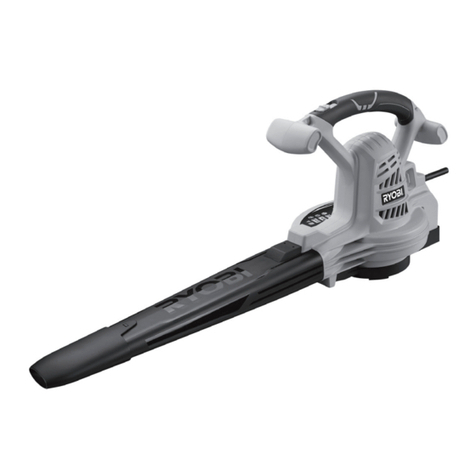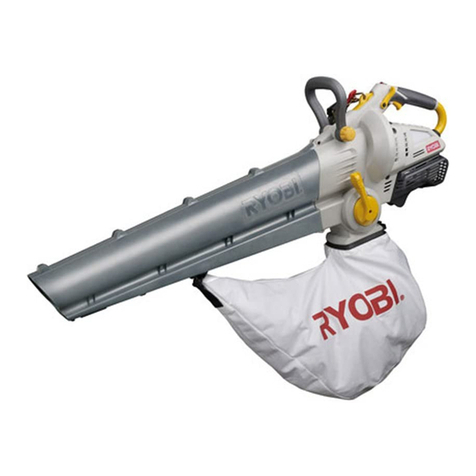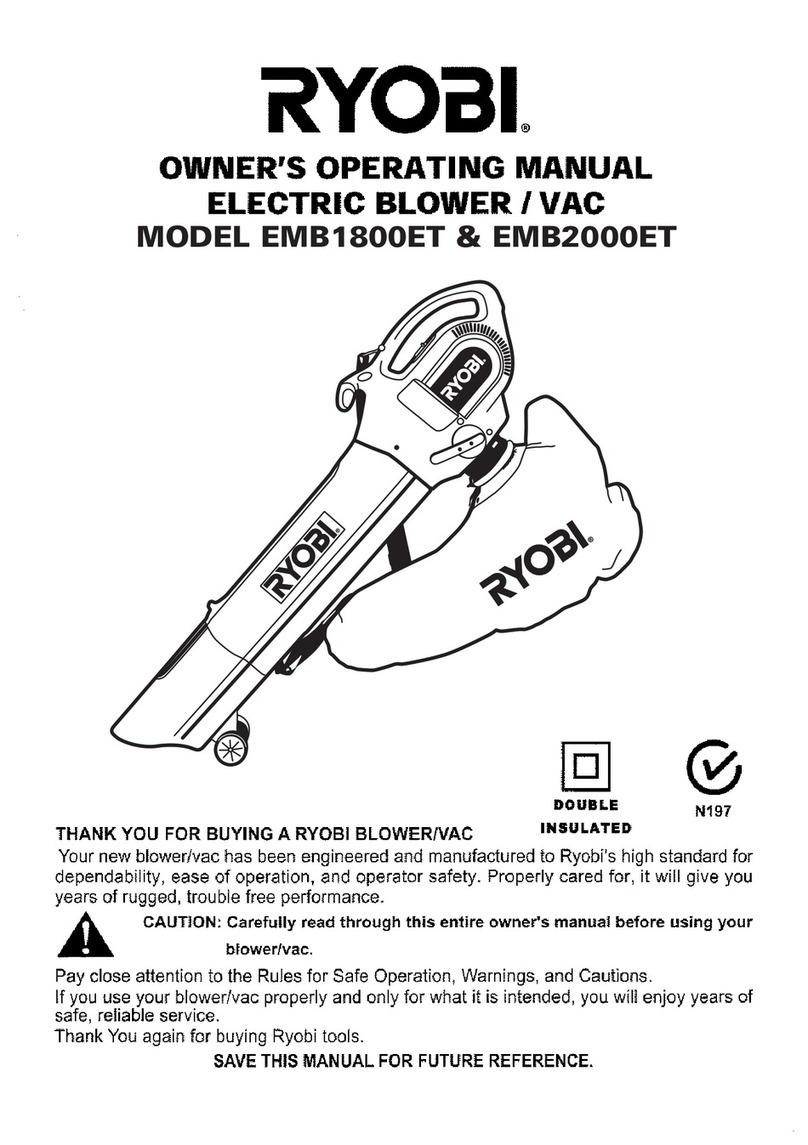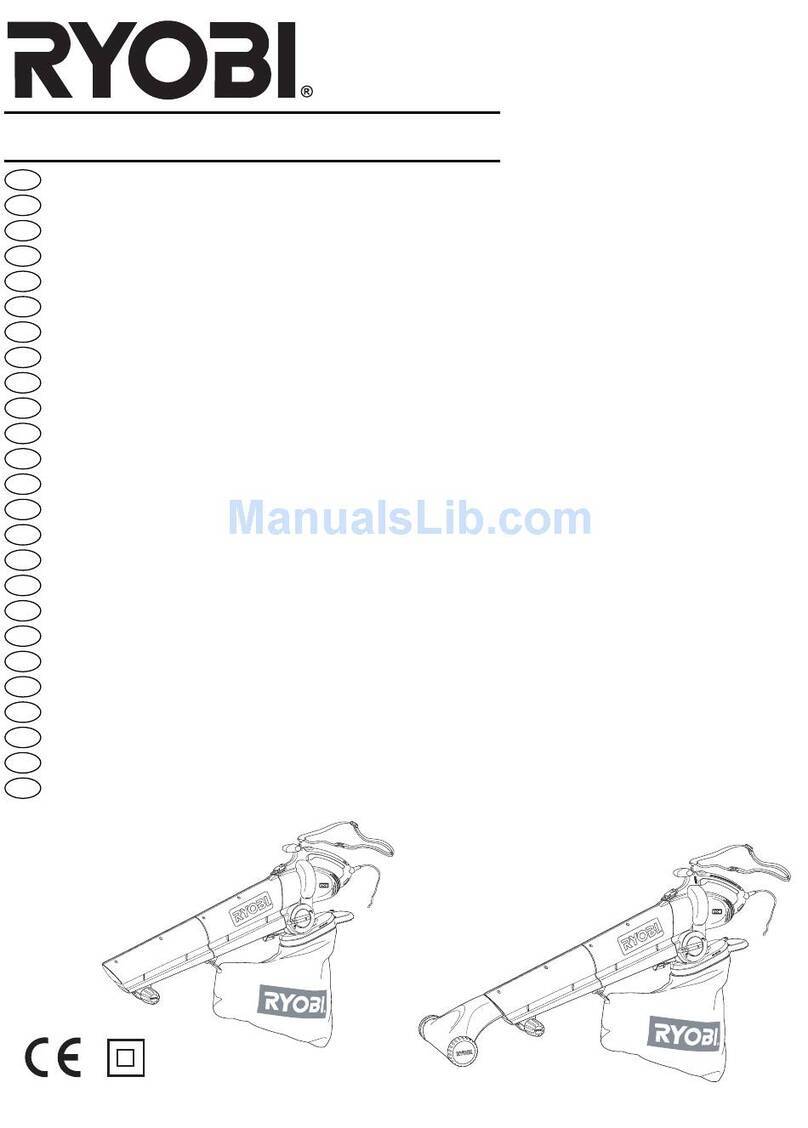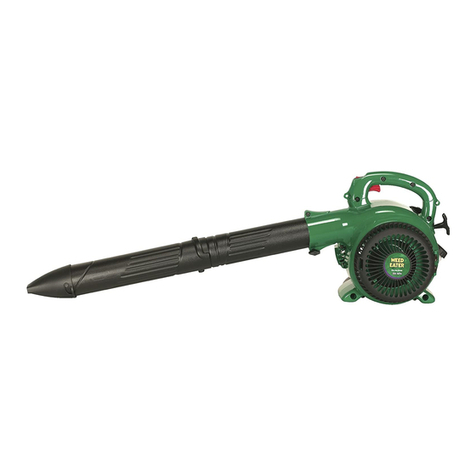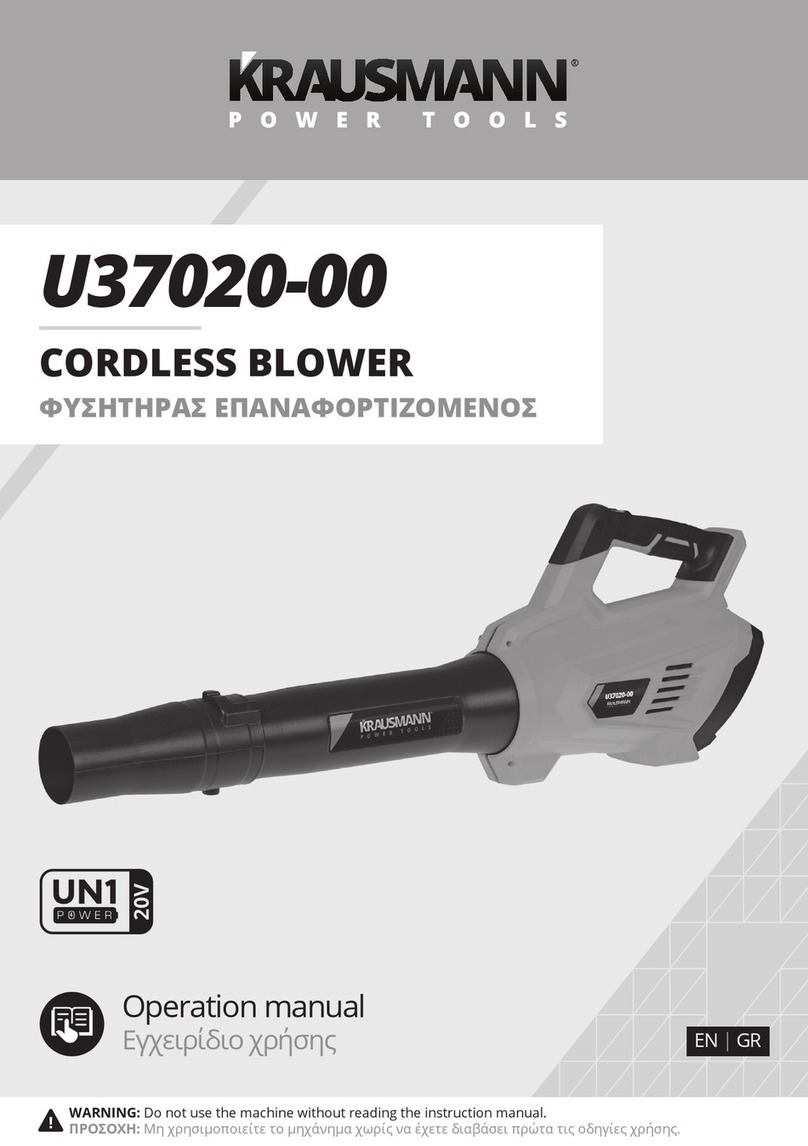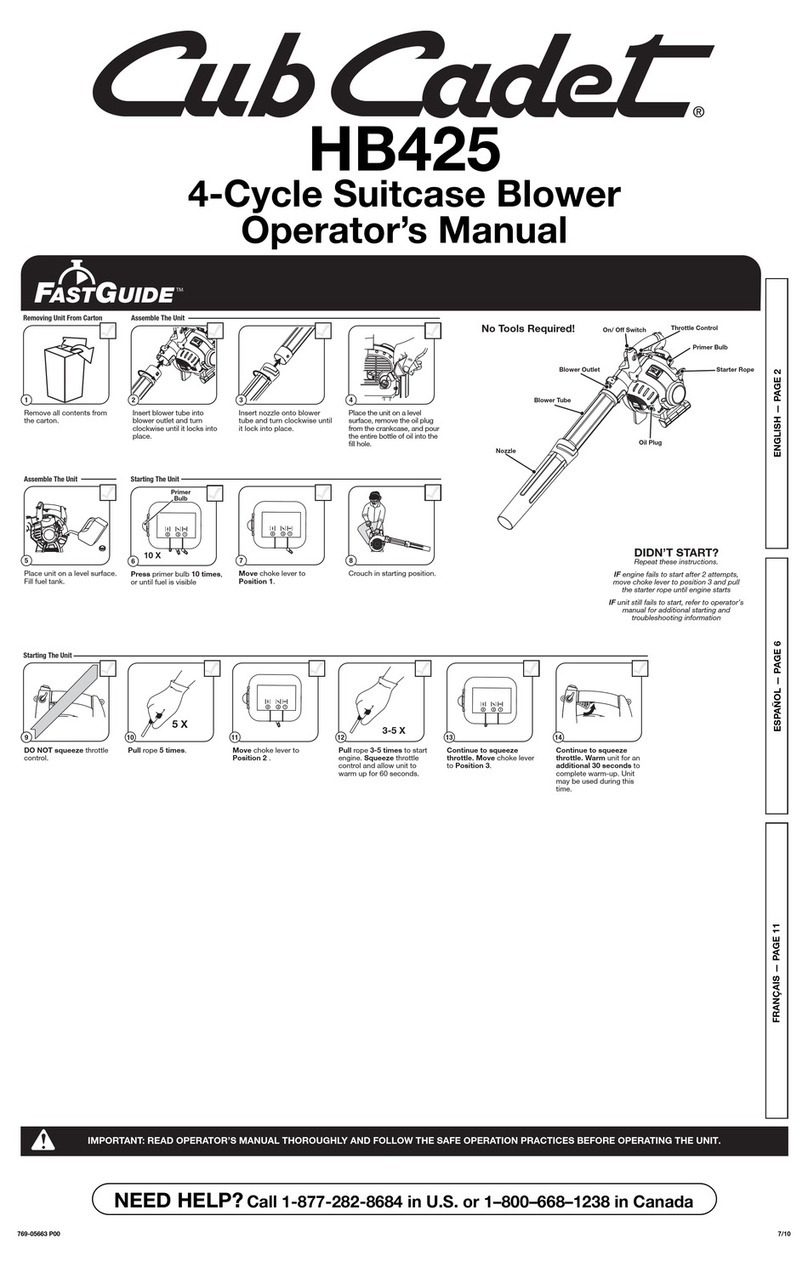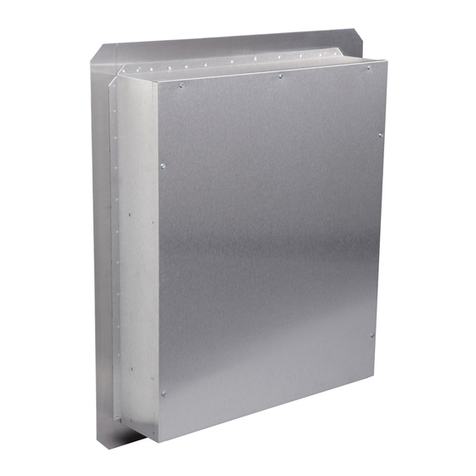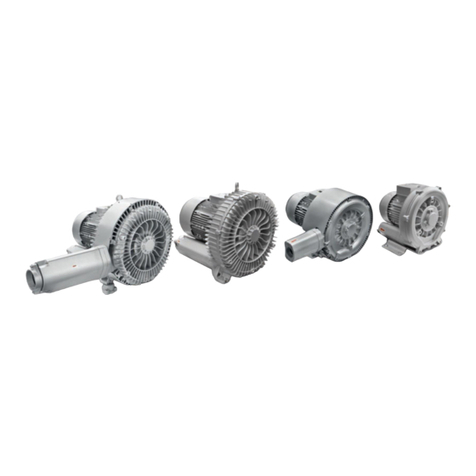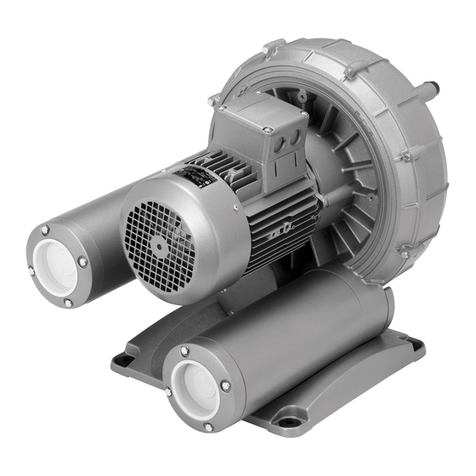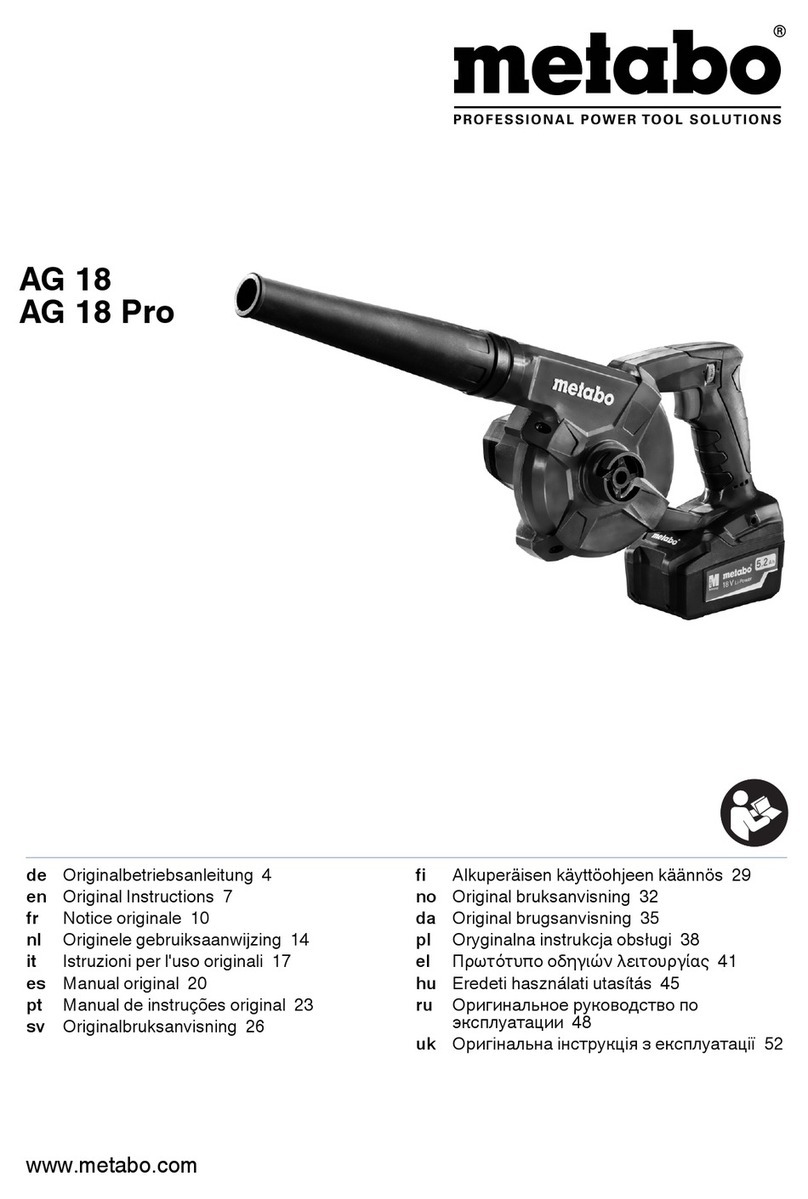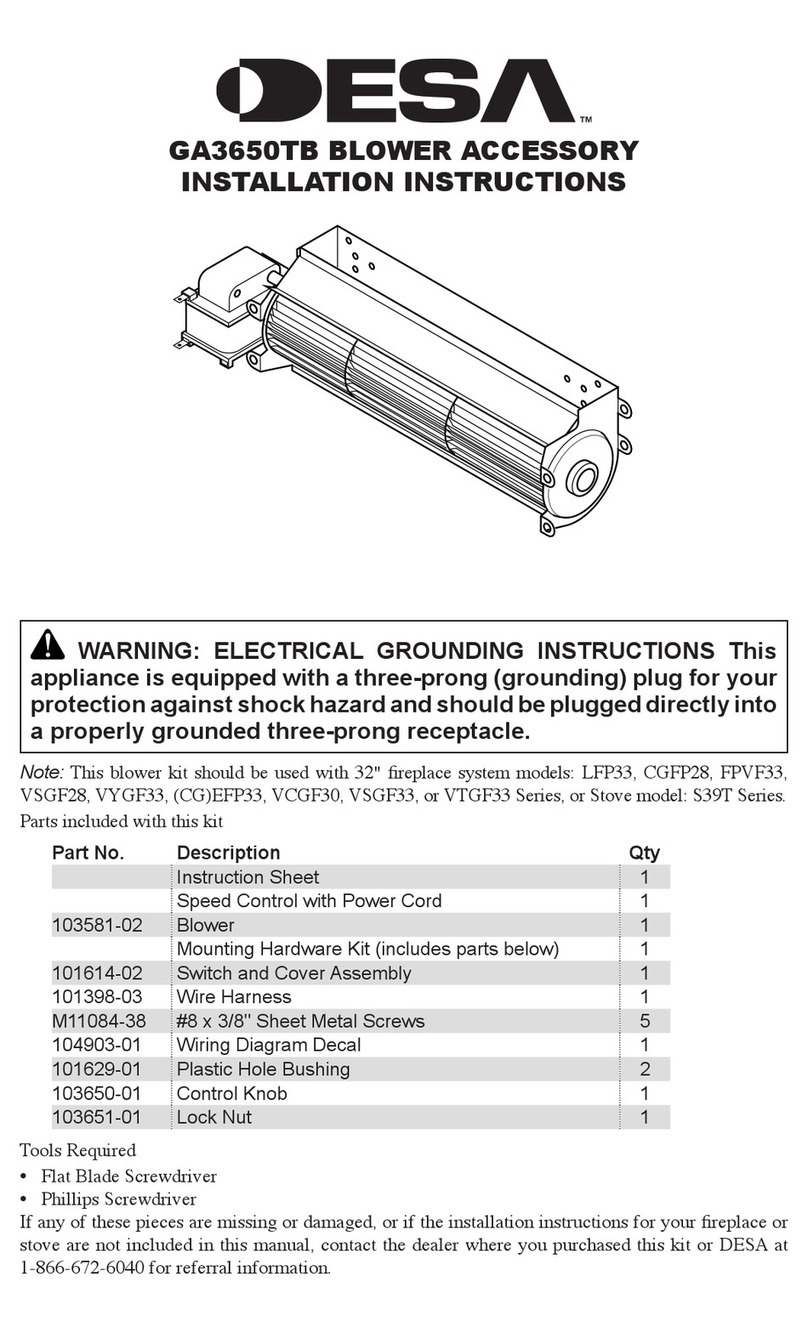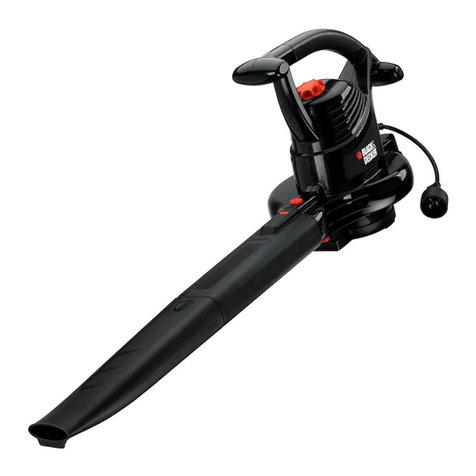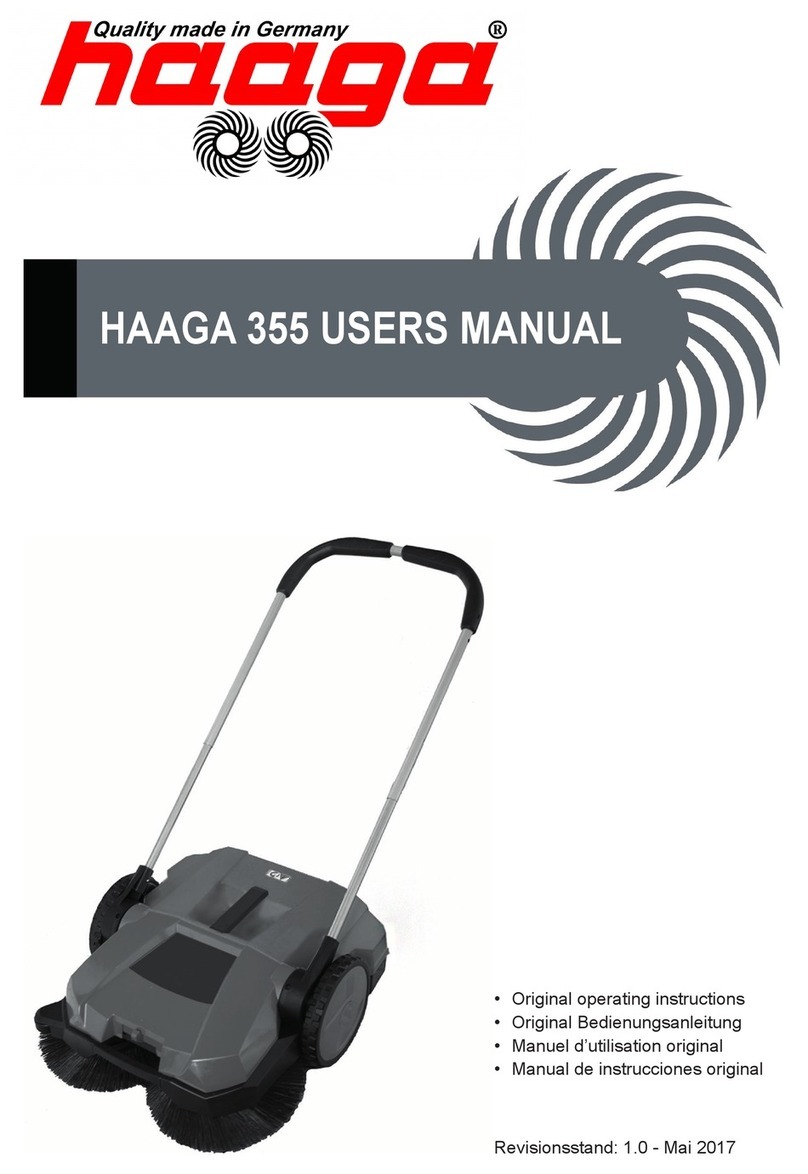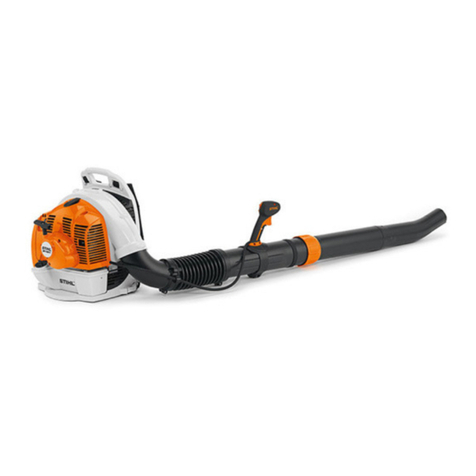
Page 3 – English
WARNING:
READ AND UNDERSTAND ALL INSTRUCTIONS
BEFORE USING THIS APPLIANCE. Failure to follow all
instructions listed below may result in electric shock, fire,
and/or serious personal injury.
READ THESE INSTRUCTIONS BEFORE
USING THIS BLOWER
For safe operation, read and understand all instructions
before using this product. Follow all safety instructions.
Failure to follow all safety instructions listed below, can
result in serious personal injury.
Do not operate power tools in explosive atmospheres,
such as in the presence of flammable liquids, gases, or
dust. Power tools create sparks which may ignite the dust
or fumes.
Toreduce therisk ofelectricshock, thistool has apolarized
plug (one blade is wider than the other) and will require
the use of a polarized extension cord. The plug will fit into
a polarized extension cord only one way. If the plug does
not fit fully into the extension cord, reverse the plug. If the
plug still does not fit, obtain a correct polarized extension
cord. A polarized extension cord will require the use of a
polarized wall outlet. This plug will fit into the polarized
wall outlet only one way. If the plug does not fit fully into
the wall outlet, reverse the plug. If the plug still does not
fit, contact a qualified electrician to install the proper wall
outlet. Do not change the equipment plug, extension cord
receptacle, or extension cord plug in any way.
Avoidbodycontactwith grounded surfacessuch as
pipes,
radiators, ranges, and refrigerators. There is an increased
risk of electric shock if your body is grounded.
Don’t expose power tools to rain or wet conditions. Water
entering a power tool will increase the risk of electric
shock.
Use outdoor extension cords marked W-A, W,
SW-A,
SOW-A,STW-A, STOW-A,SJW-A, SJTW-A,or SJTOW-A.
These cords are rated for outdoor use and reduce the risk
of electric shock.
Neverallow childrentooperate theequipment. Neverallow
adultsto operatethe equipmentwithoutproperinstruction.
Wear eye protection with side shields which is marked
to comply with ANSI Z87.1 as well as hearing protection
whenoperating thisproduct.Followingthisrulewillreduce
the risk of serious personal injury.
Always use face or dust mask if operation is dusty.
Use extra care when cleaning on stairs.
Do not leave appliance plugged in. Unplug from outlet
when not in use and before servicing.
Use only as described in this manual. Use only
manufacturer’s recommended attachments.
Keep hair, loose clothing, fingers and all body parts away
from openings and moving parts.
Dress Properly – Use of rubber gloves and substantial
footwear is recommended when working outdoors. Wear
heavy, long pants, long sleeves, boots, and gloves. Do not
wear loose fitting clothing, short pants, sandals or similar
lightweight footwear, jewelery of any kind, or go barefoot.
Use of footwear and gloves with electrical protection is
recommended.Footwear shouldprotectfeet and improve
footing on slippery surfaces.
Do not force tool. Use the correct tool for your application.
The correct tool will do the job better and safer at the rate
for which it is designed.
Do not use on steps, a ladder, roof top, tree, or other
unstablesupport. Stablefooting ona solidsurface enables
better control of the blower in unexpected situations.
Secure long hair so it is above shoulder level to prevent
entanglement in any moving parts.
Keep firm footing and balance. Do not overreach.
Overreaching can result in loss of balance.
Turn off all controls before unplugging.
Do not allow to be used as a toy. Close attention is
necessary when used by or near children.
Avoid accidental starting. Be sure the power switch is not
on before plugging in. Turn switch off before unplugging.
Do not use tool if switch does not turn it on or off. Any tool
that cannot be controlled with the switch is dangerous
and must be repaired.
Keep all bystanders, children, and pets at least 50 ft.
away.
Stay alert – Do not operate this unit when you are tired,
ill, or under the influence of alcohol, drugs, or medication.
Do not operate in poor lighting.
Check the work area before each use. Remove all objects
such as rocks, broken glass, nails, wire, or string which
can be thrown or become entangled in the machine.
Neveruseblower nearfires,fireplaces,hotashes,barbecue
pits, etc., which may cause fire to spread.
Do not pull or carry by cord, use cord as a handle, close
a door on a cord, or pull cord around sharp edges or
corners. Do not run appliance over cord. Keep cord away
from heated surfaces.
Do not unplug by pulling on cord. To unplug, grasp the
plug, not the cord.
Do not handle plug or appliance with wet hands.
Do not put any object into openings. Do not use with any
opening blocked; keep free of dust, lint, hair, and anything
that may reduce air flow.
This appliance is provided with double insulation. Use
only identical replacement parts. See instructions for
Servicing of Double-Insulated Appliances.
IMPORTANT SAFETY INSTRUCTIONS
